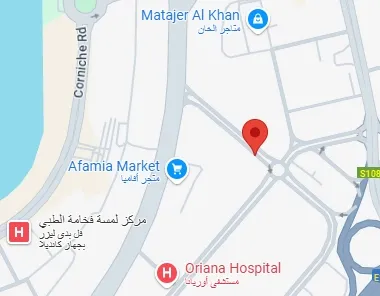As businesses in the UAE continue to grow in the digital age, having an effective online presence has become more critical than ever. A well-designed website is often the first point of contact between a business and potential customers. However, creating a website that both meets business goals and resonates with users can be challenging, especially in a competitive and diverse market like the UAE.
Common web design challenges faced by UAE businesses include issues such as cultural sensitivity, mobile optimization, site speed, and user experience (UX) design. These challenges, if not addressed, can hinder a business’s ability to engage with its audience, reduce conversions, and limit its growth potential. In this article, we’ll explore the most common challenges faced by UAE businesses when it comes to web design and provide strategies for overcoming them.
1. Cultural Sensitivity and Localization
Understanding the Local Culture
One of the common web design challenges faced by UAE businesses is ensuring that their websites are culturally sensitive and appropriate for their target audience. The UAE is a culturally diverse country, with a large expatriate population alongside local Emiratis. Designing a website that appeals to both groups can be tricky, especially if it doesn’t take local customs, language, and expectations into account.
Key Considerations for Cultural Sensitivity:
Language: While English is widely spoken, Arabic is the official language of the UAE. Offering websites in both Arabic and English can help businesses reach a wider audience. However, it’s important to ensure that the translation is accurate and culturally appropriate, as literal translations may not always convey the intended message.
Visual Elements: Colors, symbols, and images used in web design need to be culturally sensitive. For example, certain colors like green (representing Islam) and gold (symbolizing wealth) are highly regarded in the UAE. On the other hand, colors like red may have negative connotations in some cultural contexts.
Imagery: The use of imagery should reflect the local culture. For example, images that feature Dubai’s skyline, traditional elements like Arabic calligraphy, or local customs and landmarks will resonate better with local visitors.
By addressing cultural nuances, businesses can create websites that build trust and rapport with their local audience, which is essential for conversions and long-term success.

2. Mobile Optimization
The Mobile-First Market
Another significant challenge for UAE businesses is mobile optimization. The UAE has one of the highest mobile penetration rates in the world, with the majority of internet users browsing websites on their smartphones. As a result, failing to optimize websites for mobile devices can lead to poor user experience and a high bounce rate.
Strategies to Overcome Mobile Optimization Issues:
Responsive Design: Implement responsive web design so that the website automatically adjusts to different screen sizes. This ensures that the website looks and functions well across smartphones, tablets, and desktops.
Fast Load Times: Mobile users expect quick load times. Slow-loading websites can cause frustration, leading to higher bounce rates. Compressing images, optimizing content, and using lazy loading techniques can significantly improve mobile site performance.
Touch-Friendly Navigation: Mobile users interact with websites through touch, so ensure that navigation elements like buttons and links are easy to tap. Avoid small text or buttons that are difficult to select on a mobile device.
By prioritizing mobile optimization, UAE businesses can improve user engagement and enhance the chances of converting visitors into customers.
3. Site Speed and Performance
Impact of Slow Websites on User Experience
Website speed is a critical factor that can impact both the user experience (UX) and SEO rankings. In the UAE, users expect fast-loading websites, and if a site takes too long to load, they are likely to abandon it and turn to competitors. This is one of the common web design challenges faced by UAE businesses that, if not addressed, can result in significant loss of traffic and sales.
Solutions for Improving Site Speed:
Optimize Images: Large images can significantly slow down a website’s load time. Ensure that all images are properly compressed and optimized for the web without compromising quality.
Reduce HTTP Requests: Each element of a webpage (images, scripts, CSS) makes an HTTP request, so minimizing these requests can help improve load times.
Content Delivery Network (CDN): Using a CDN to distribute content across multiple servers worldwide can speed up the delivery of website content to users, especially those in remote areas of the UAE.
Minimize Code: Reducing unnecessary code (CSS, JavaScript, HTML) can also improve website performance and reduce load time.
By optimizing website speed, businesses in the UAE can enhance their users’ experience, improve their Google rankings, and increase conversions.
4. User Experience (UX) Design
Focusing on Ease of Use
Good user experience (UX) design is essential for ensuring that visitors to your website can easily find what they’re looking for and complete their desired actions, whether it’s making a purchase or contacting your business. Many UAE businesses struggle with creating a seamless, intuitive UX design that keeps users engaged and minimizes friction points.
Common UX Design Challenges:
Complicated Navigation: If a website is hard to navigate, users will become frustrated and leave. A website’s navigation menu should be simple and intuitive, allowing users to find relevant information quickly.
Cluttered Design: A crowded or visually overwhelming website can confuse users. It’s important to keep the layout clean, with ample white space and clear call-to-action buttons.
Accessibility: Websites should be designed with accessibility in mind. This includes ensuring that users with disabilities can easily navigate the site. For example, websites should be compatible with screen readers and have alt text for images.
Solutions to Improve UX:
Clear Information Hierarchy: Organize content in a logical manner, with the most important information placed at the top or in prominent positions.
Consistent Design: Use a consistent design language across all pages of the website, including fonts, colors, and buttons.
Effective CTAs: Place clear and compelling calls to action (CTAs) throughout the site to guide users towards conversion points.
By addressing UX design issues, UAE businesses can enhance the usability of their websites and increase the likelihood of conversions.

5. SEO Integration
Balancing Design and SEO
Many businesses in the UAE face the challenge of balancing aesthetic design with SEO (Search Engine Optimization) needs. While it’s essential to create visually appealing websites, they must also be optimized for search engines to ensure they rank well on Google.
Common SEO Design Challenges:
Lack of Proper HTML Tags: Failing to use proper HTML tags (title tags, header tags, etc.) can negatively impact a website’s SEO performance.
Poor Content Structure: Content that is not structured in a way that is easy for search engines to crawl can make it difficult for a website to rank.
Slow Loading Speed: As mentioned earlier, slow loading times can not only frustrate users but also harm your SEO rankings.
Strategies for Better SEO Integration:
Optimize HTML Structure: Use proper HTML tags and structure your content in a way that is both user-friendly and search engine-friendly.
Keyword Optimization: Ensure that keywords are used effectively throughout the website’s content, meta descriptions, and headings.
SEO-Friendly URLs: Use clean, descriptive URLs that include relevant keywords to improve search engine visibility.
By integrating SEO best practices into the design process, businesses in the UAE can increase their online visibility and attract more organic traffic.
Conclusion: Overcoming Common Web Design Challenges in the UAE
Common web design challenges faced by UAE businesses can be difficult to overcome, but with the right strategies, these obstacles can be turned into opportunities for growth. From cultural sensitivity and mobile optimization to site speed and UX design, addressing these challenges will help businesses create websites that are not only visually appealing but also functional, fast, and user-friendly.
By focusing on these key areas, UAE businesses can build websites that enhance the user experience, improve conversions, and drive long-term success in a competitive online marketplace.



